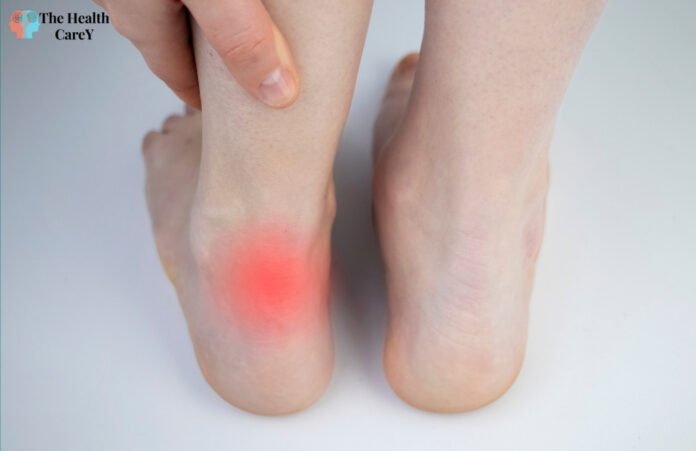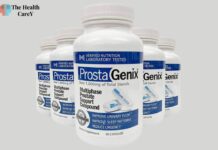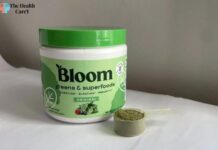Are you suffering from bone spurs and looking for natural ways to dissolve them? Bone spurs, also known as osteophytes, are bony projections that develop along the edges of bones. They usually form in the joints, but can also occur in other parts of the body. Bone spurs are commonly associated with osteoarthritis, but can also be caused by other factors such as injury or aging.
Symptoms of bone spurs can vary depending on their location, but may include pain, swelling, stiffness, and reduced range of motion. While surgery is a common treatment option, natural remedies can also be effective in relieving symptoms and dissolving bone spurs. In this article, we will explore some natural treatments and remedies for bone spurs that you can try at home.
Key Takeaways
- Bone spurs are bony projections that develop along the edges of bones and are commonly associated with osteoarthritis.
- Symptoms of bone spurs can include pain, swelling, stiffness, and reduced range of motion.
- Natural remedies such as dietary supplements and herbal remedies can be effective in relieving symptoms and dissolving bone spurs.
What are Bone Spurs?
Bone spurs, also known as osteophytes, are bony projections that develop along the edges of bones. They typically occur in joints where two bones meet and can cause pain and discomfort. Bone spurs are often associated with joint diseases such as osteoarthritis and degenerative arthritis, but they can also be caused by other factors such as injury or wear and tear.
Bone spurs develop when the body tries to repair itself by building extra bone. This can happen when the cartilage that cushions the joints wears down, causing the bones to rub against each other. The body responds by creating more bone to try and protect the joint. Over time, this can lead to the formation of bone spurs.
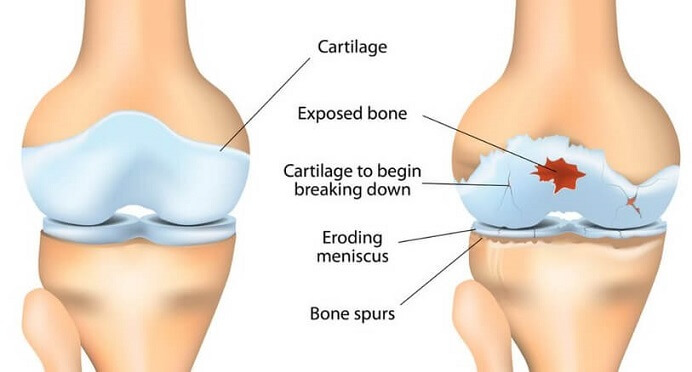
Calcium deposits can also contribute to the development of bone spurs. When calcium builds up in the body, it can accumulate in the joints and lead to the formation of spurs.
In summary, bone spurs are bony projections that develop along the edges of bones, often in joints where two bones meet. They can be caused by joint diseases, injury, or calcium deposits.
Symptoms of Bone Spurs
If you have bone spurs, you may experience a range of symptoms. Some people may not experience any symptoms at all. However, if you do experience symptoms, they may include:
- Pain: This is the most common symptom of bone spurs. The pain may be constant or intermittent and may worsen with activity.
- Numbness: If the bone spur is pressing on a nerve, you may experience numbness or tingling in the affected area.
- Weakness: The bone spur may interfere with the normal movement of your joints, which can lead to weakness.
- Stiffness: You may experience stiffness in the affected joint, which can make it difficult to move.
- Swelling: In some cases, bone spurs can cause swelling in the affected area.
If you experience any of these symptoms, it is important to see a doctor. Your doctor can help determine the cause of your symptoms and recommend an appropriate treatment plan. In some cases, bone spurs may require medical intervention, such as surgery, to alleviate symptoms.
Risk Factors and Causes of Bone Spurs
Bone spurs, also known as osteophytes, are bony projections that develop along the edges of bones. They can occur in any part of the body, but are most commonly found in the joints. Here are some risk factors and causes of bone spurs that you should be aware of:
Advancing Age
As you get older, the cartilage in your joints can start to break down. This can lead to the growth of bone spurs as your body tries to repair the damage. The risk of developing bone spurs increases with age, and they are more common in people over the age of 60.
Overweight
Being overweight puts extra pressure on your joints, which can cause damage to the cartilage and lead to the growth of bone spurs. If you are overweight, losing weight can help reduce your risk of developing bone spurs.
Trauma
Injuries to your bones or joints can cause damage to the cartilage and lead to the growth of bone spurs. This is particularly true if the injury is not treated properly or if it is a repetitive stress injury.
Family History
If you have a family history of bone spurs, you may be more likely to develop them yourself. This is because some people may have a genetic predisposition to developing bone spurs.
Physical Activity
Certain types of physical activity, such as running or jumping, can put extra stress on your joints and increase your risk of developing bone spurs. However, it is important to note that physical activity is also important for maintaining healthy bones and joints.
Overall, bone spurs can be caused by a variety of factors, and some people may be more at risk than others. If you are experiencing symptoms of bone spurs, it is important to talk to your doctor to determine the best course of treatment.
Bone Spurs Locations and Complications
Bone spurs can develop in various locations throughout the body, including the spine, joints, knee, shoulders, hips, heel spurs, plantar fasciitis, tendons, ligaments, muscles, nerves, spinal cord, and vertebrae. The location of the bone spur can determine the type of complications that may arise.
In the spine, bone spurs can cause narrowing of the spinal canal, leading to spinal stenosis. This can result in back pain, numbness, and weakness in the legs. In severe cases, it can cause bladder or bowel dysfunction.
In joints, bone spurs can cause pain and stiffness, limiting mobility and range of motion. In the knee, bone spurs can cause swelling and tenderness, making it difficult to walk or climb stairs. In the shoulders, bone spurs can cause impingement syndrome, which can lead to pain and weakness in the arm.
Heel spurs and plantar fasciitis can cause pain in the heel and arch of the foot, making it difficult to stand or walk for long periods. Tendons and ligaments can become inflamed and painful due to bone spurs, leading to tendinitis or bursitis. In muscles, bone spurs can cause pain and weakness, limiting mobility and strength.
Nerves can become compressed or irritated by bone spurs, leading to pain, numbness, or tingling sensations. In severe cases, it can cause nerve damage. In the spinal cord, bone spurs can cause myelopathy, which can result in weakness, numbness, and difficulty walking.
Overall, bone spurs can cause a range of complications depending on their location. It is important to seek medical attention if you experience any symptoms related to bone spurs.
Diagnosis of Bone Spurs
If you suspect that you have bone spurs, you should see a doctor or healthcare provider for a proper diagnosis. A healthcare provider can perform a physical exam and order imaging tests to confirm the presence of bone spurs.
X-rays are the most common imaging test used to diagnose bone spurs. X-rays can show the size and location of the bone spur, as well as any damage it may be causing to surrounding tissues.
In some cases, a healthcare provider may order additional tests such as an MRI or CT scan to get a more detailed view of the bone spur and surrounding tissues.
It’s important to note that not all bone spurs cause symptoms, and a diagnosis of bone spurs does not necessarily mean that you need treatment. Your healthcare provider will work with you to determine the best course of action based on your individual situation.
Overall, if you suspect that you have bone spurs, it’s important to seek a proper diagnosis from a healthcare provider. This will help ensure that you receive the appropriate treatment, if necessary.
Natural Treatments for Bone Spurs
If you are experiencing bone spurs, there are natural treatments that can help alleviate your symptoms. These treatments include home remedies, exercise, stretching, massage, rest, walking, warm-up, posture, and range of motion.
One of the most effective natural treatments for bone spurs is exercise. Exercise can help strengthen the muscles and joints around the bone spur, which can help reduce pain and inflammation. You can try low-impact exercises such as swimming, cycling, or walking. These exercises can help improve your range of motion and flexibility.
Stretching is also an effective natural treatment for bone spurs. Stretching can help improve your range of motion and flexibility, which can help alleviate pain and inflammation. You can try stretching exercises such as calf stretches, hamstring stretches, and quadriceps stretches.
Massage is another natural treatment that can help alleviate pain and inflammation caused by bone spurs. Massage can help improve blood circulation, which can help reduce pain and inflammation. You can try massaging the affected area with essential oils such as peppermint oil, ginger oil, or lavender oil.
Rest is also an important natural treatment for bone spurs. Resting can help reduce pain and inflammation caused by bone spurs. You can try resting the affected area by avoiding activities that aggravate your symptoms.
Walking is another effective natural treatment for bone spurs. Walking can help improve blood circulation, which can help reduce pain and inflammation. You can try walking for at least 30 minutes a day to help alleviate your symptoms.
Warm-up exercises are also important natural treatments for bone spurs. Warm-up exercises can help prepare your muscles and joints for physical activity, which can help reduce pain and inflammation. You can try warm-up exercises such as walking, cycling, or stretching.
Posture is also an important natural treatment for bone spurs. Good posture can help reduce stress on your joints and muscles, which can help alleviate pain and inflammation. You can try practicing good posture by standing up straight, keeping your shoulders back, and keeping your feet shoulder-width apart.
Range of motion exercises are also effective natural treatments for bone spurs. Range of motion exercises can help improve your flexibility and mobility, which can help reduce pain and inflammation. You can try range of motion exercises such as shoulder circles, neck rotations, and hip rotations.
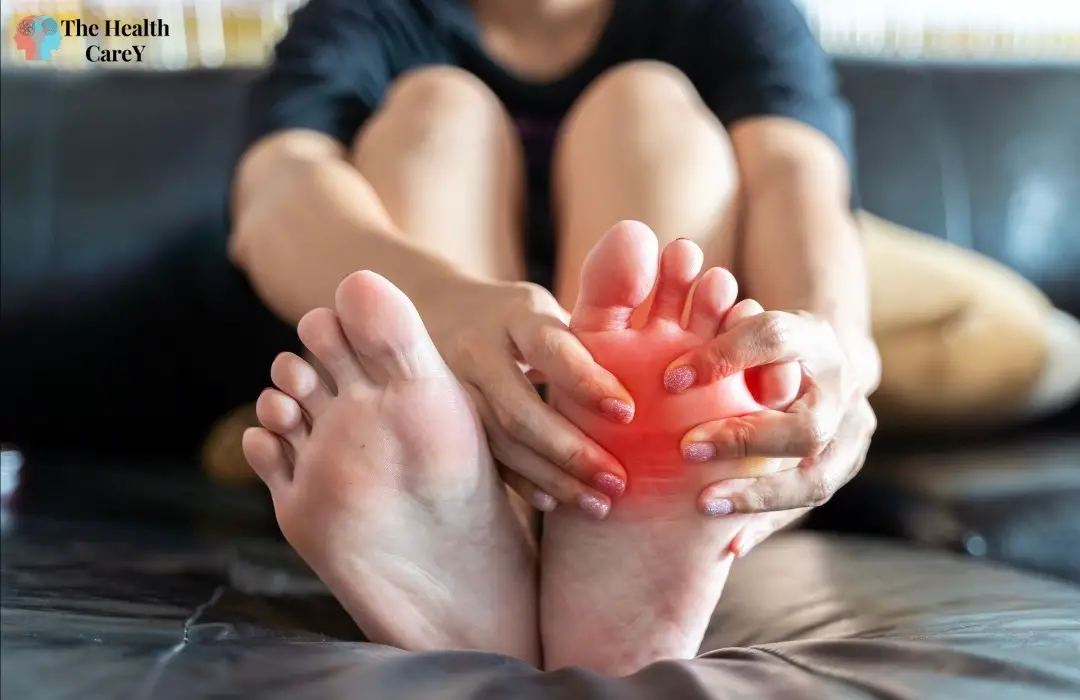
Dietary Supplements and Bone Spurs
Dietary supplements can help reduce inflammation, strengthen bones, and promote overall bone health. Here are some supplements that may be beneficial for managing bone spurs:
Calcium
Calcium is an essential mineral that helps build and maintain strong bones. Adequate calcium intake can help prevent bone loss and reduce the risk of fractures. While calcium supplements are widely available, it’s best to get your calcium from food sources such as dairy products, leafy greens, and fortified foods.
Magnesium
Magnesium is another mineral that plays a role in bone health. It helps regulate calcium levels in the body and is necessary for the formation of new bone tissue. Magnesium supplements are available, but it’s also found in nuts, seeds, whole grains, and leafy greens.
Vitamin D
Vitamin D is essential for the absorption of calcium and is necessary for bone health. It’s produced by the body when the skin is exposed to sunlight, but it’s also found in fatty fish, egg yolks, and fortified foods. Vitamin D supplements are available and may be beneficial for people who don’t get enough sun exposure or have low levels of vitamin D.
Boron
Boron is a trace mineral that may help prevent bone loss and reduce inflammation. It’s found in nuts, fruits, and vegetables, and boron supplements are also available.
Omega-3 Fatty Acids
Omega-3 fatty acids are anti-inflammatory and may help reduce inflammation associated with bone spurs. They’re found in fatty fish, nuts, and seeds, and omega-3 supplements are also available.
Anti-Inflammatory Supplements
Some supplements have anti-inflammatory properties that may help reduce inflammation associated with bone spurs. These include curcumin, ginger, and quercetin. While these supplements are generally considered safe, it’s best to talk to your healthcare provider before taking them.
Incorporating these supplements into your diet may help reduce inflammation, strengthen bones, and promote overall bone health. However, it’s important to remember that supplements should not replace a healthy diet and lifestyle.
Herbal Remedies for Bone Spurs
If you are looking for natural remedies to relieve bone spurs, you may want to try some herbal remedies. Here are some herbs that may help:
Turmeric
Turmeric is a spice that contains a natural anti-inflammatory compound called curcumin. Curcumin has been shown to reduce inflammation and pain associated with bone spurs. You can take turmeric as a supplement or add it to your food. However, it is important to note that high doses of turmeric may cause gastrointestinal side effects.
Ginger
Ginger is another herb that has anti-inflammatory properties. It contains compounds called gingerols and shogaols, which can help reduce inflammation and pain. You can take ginger as a supplement or add it to your food. Ginger tea is also a popular way to consume ginger.
Chamomile
Chamomile is an herb that has been used for centuries to treat various ailments, including inflammation and pain. It contains compounds called flavonoids, which have anti-inflammatory properties. You can drink chamomile tea or take chamomile supplements to help relieve bone spur pain.
It is important to note that while these herbs may help relieve bone spur pain, they are not a substitute for medical treatment. If you are experiencing severe pain or other symptoms, you should seek medical attention.
How to Dissolve Bone Spurs Naturally?
If you’re looking to dissolve bone spurs naturally, there are several remedies that may help alleviate the pain and inflammation caused by this condition. Here are some natural remedies that you can try:
Ice and Cold Compress
Applying ice or a cold compress to the affected area can help reduce inflammation and pain caused by bone spurs. You can apply ice or a cold compress for 15-20 minutes at a time, several times a day.
Epsom Salt (Magnesium Sulfate)
Epsom salt is a natural source of magnesium sulfate, which is known to help reduce inflammation and pain. You can add Epsom salt to your bathwater and soak in it for 20-30 minutes.
Apple Cider Vinegar (Organic ACV)
Apple cider vinegar is known for its anti-inflammatory and alkalizing properties. You can mix 1-2 tablespoons of organic ACV with a glass of water and drink it once or twice a day.
Baking Soda
Baking soda is an alkaline substance that can help neutralize the acid in your body, which can help reduce inflammation and pain caused by bone spurs. You can mix 1 teaspoon of baking soda with a glass of water and drink it once or twice a day.
Kombucha
Kombucha is a fermented tea that is rich in probiotics, which can help reduce inflammation and pain caused by bone spurs. You can drink 1-2 cups of kombucha per day.
Borax Powder (Sodium Borate)
Borax powder is a natural source of sodium borate, which is known to help reduce inflammation and pain. You can mix 1/8 teaspoon of borax powder with a glass of water and drink it once a day.
These natural remedies may help alleviate the pain and inflammation caused by bone spurs, but it’s important to note that they may not work for everyone. If your symptoms persist or worsen, it’s important to seek medical attention.
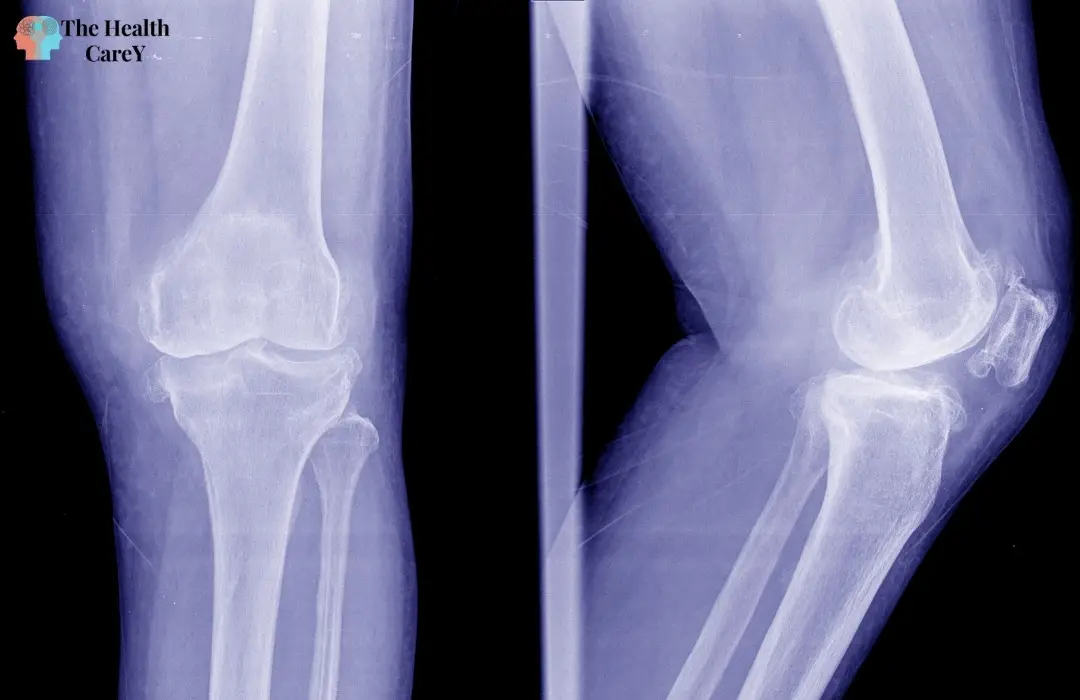
When to Consider Surgery
While natural remedies can be effective in reducing the symptoms of bone spurs, there are situations where surgery may be necessary. Surgery is typically recommended when the bone spur is causing severe pain, joint damage, or limited mobility that cannot be managed with non-invasive treatments.
If your bone spur is causing severe pain that is interfering with your daily life, it may be time to consider surgery. Additionally, if the bone spur is causing joint damage or limiting your range of motion, surgery may be necessary to prevent further damage and improve your overall quality of life.
During surgery, the bone spur is usually removed, and any joint damage is repaired. While surgery can be an effective way to treat bone spurs, it is important to understand that it is not without risks. Complications can occur, and recovery time can be lengthy.
It is important to discuss the risks and benefits of surgery with your doctor before making a decision. Your doctor can help you weigh the pros and cons of surgery and determine if it is the best option for you.
Injection to Dissolve Bone Spurs
In some cases, your doctor may recommend an injection to help dissolve bone spurs. This injection typically contains a medication that helps to reduce inflammation and pain in the affected area. One common medication used in these injections is corticosteroids.
Corticosteroids are a type of anti-inflammatory medication that can help to reduce swelling and inflammation in the body. When injected directly into the affected area, they can help to reduce pain and improve mobility. However, it is important to note that corticosteroids can have side effects, so it is important to discuss the risks and benefits with your doctor before deciding to pursue this treatment option.
Another medication that may be used in injection therapy for bone spurs is hyaluronic acid. This substance occurs naturally in the body and helps to lubricate and cushion joints. When injected into the affected area, it can help to reduce pain and improve mobility.
In addition to injection therapy, your doctor may also recommend over-the-counter or prescription anti-inflammatory medications, such as ibuprofen, to help manage pain and inflammation associated with bone spurs. However, it is important to follow your doctor’s instructions when taking these medications, as they can have side effects and may interact with other medications you are taking.
Overall, injection therapy can be an effective way to help manage pain and inflammation associated with bone spurs. However, it is important to discuss the risks and benefits with your doctor before deciding to pursue this treatment option.
Frequently Asked Questions
How can I naturally reduce bone spur pain?
If you are experiencing pain from bone spurs, there are a few natural remedies that may help. Applying ice to the affected area for 15-20 minutes several times a day can help reduce inflammation and pain. You can also try taking over-the-counter pain relievers such as ibuprofen or acetaminophen. Additionally, rest and avoiding activities that aggravate the pain can help reduce discomfort.
What natural remedies can help with bone spurs?
There are several natural remedies that may help with bone spurs. Some people find relief by applying heat to the affected area, either through a warm compress or a heating pad. Others have had success with herbal remedies such as turmeric, ginger, or willow bark. Massage and acupuncture may also provide relief.
Are there any exercises that can help dissolve bone spurs?
While there are no exercises that can directly dissolve bone spurs, certain exercises may help alleviate pain and improve mobility. Low-impact exercises such as walking, cycling, or swimming can help keep your joints flexible and reduce inflammation. Stretching exercises can also help improve flexibility and reduce pain.
Can dietary changes help dissolve bone spurs?
While there is no specific diet that can dissolve bone spurs, making certain dietary changes may help reduce inflammation and pain. Eating a diet rich in fruits, vegetables, whole grains, and lean protein can help reduce inflammation in the body. You may also want to consider reducing your intake of processed foods, sugar, and unhealthy fats.
What supplements may aid in dissolving bone spurs?
There is no scientific evidence to suggest that any supplements can dissolve bone spurs. However, some supplements may help reduce inflammation and improve joint health. These include omega-3 fatty acids, glucosamine, and chondroitin.
Is it possible to dissolve bone spurs without surgery?
While surgery may be necessary in some cases, it is possible to manage bone spurs without surgery. Natural remedies such as those mentioned above can help alleviate pain and reduce inflammation. Physical therapy can also help improve mobility and reduce pain. If you are experiencing severe pain or limited mobility, however, surgery may be necessary.
Also Read:
Can You Take Aspirin and Tylenol Together?


